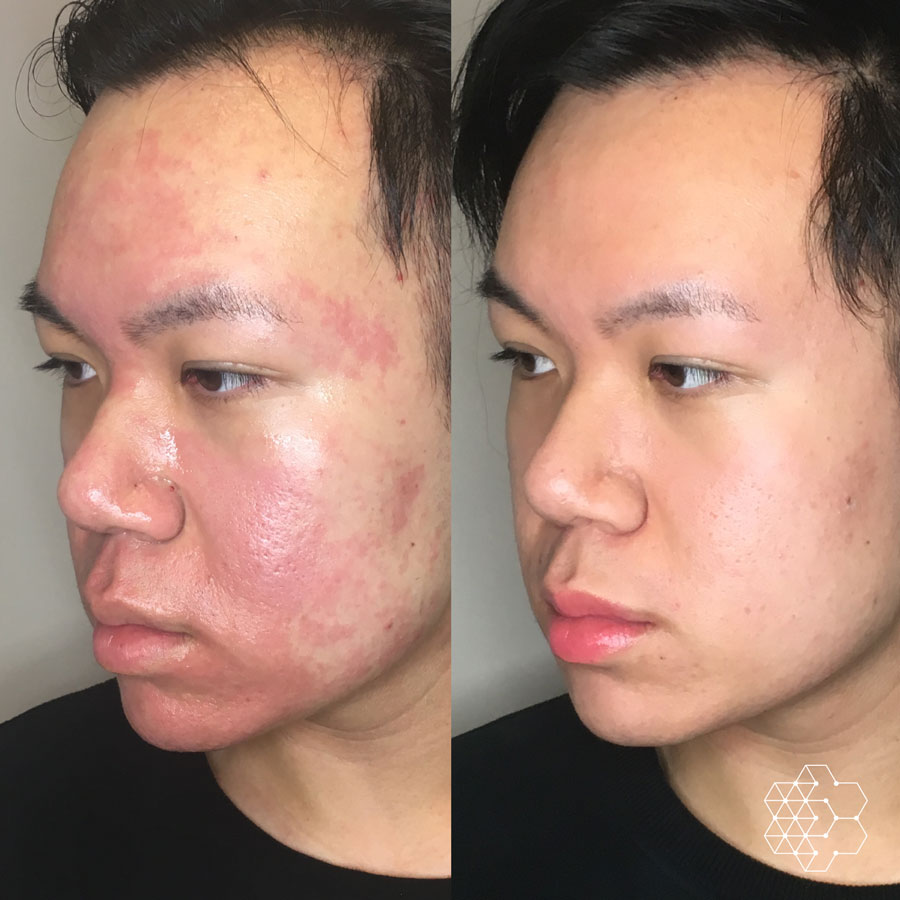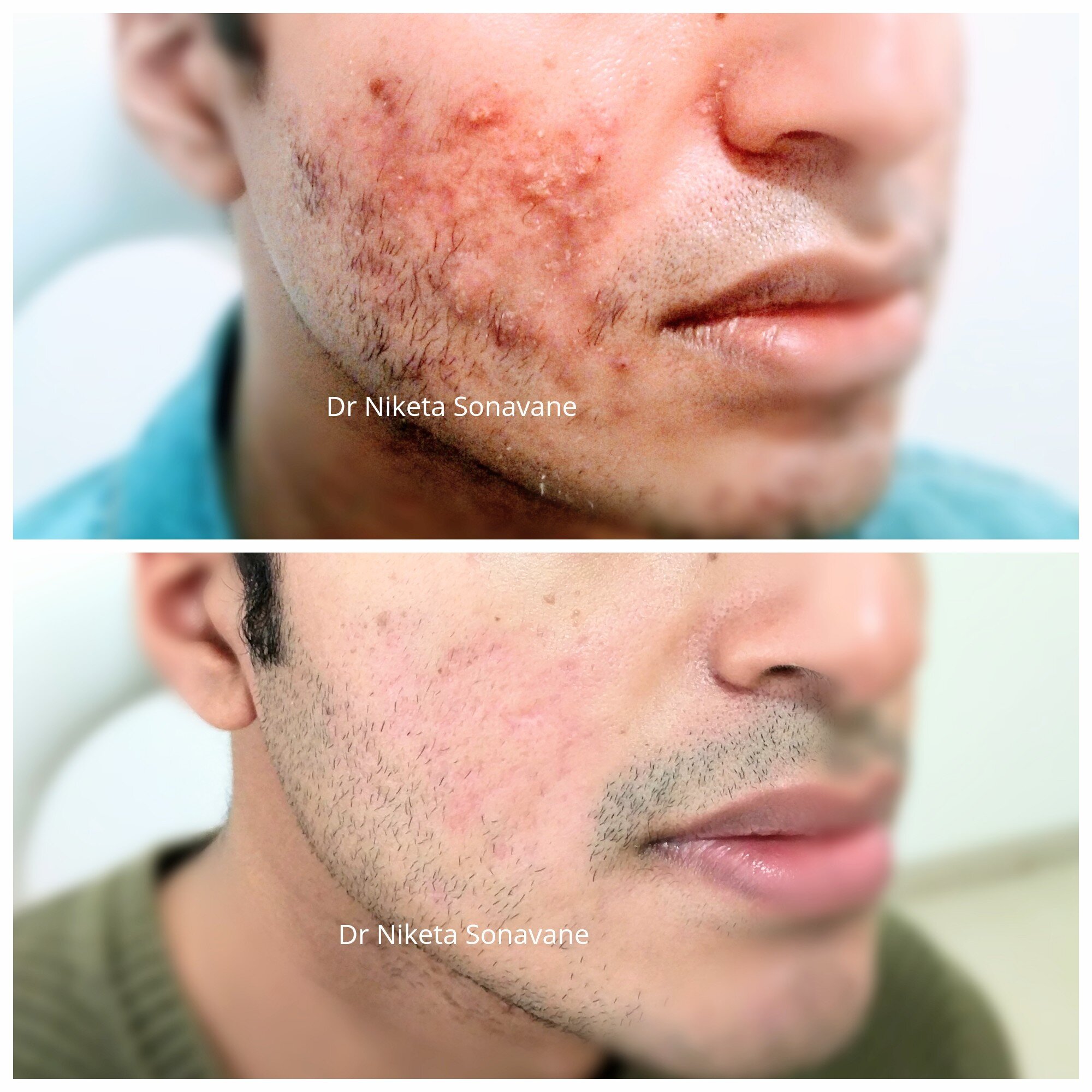Top Acne Treatment for Sensitive Skin: Gentle Solutions for Clear Skin
Top Acne Treatment for Sensitive Skin: Gentle Solutions for Clear Skin
Blog Article
Exploring Skin Problem: Determining and Dealing With Acne Scars for Healthier Skin
Acne marks stand for a considerable concern for people looking for to preserve healthy and balanced skin, as they can impact both look and self-esteem. Recognizing the different kinds of marks, from atrophic to hypertrophic, is necessary for identifying appropriate therapy alternatives.
Recognizing Acne Scars

The body's all-natural recovery procedure can result in either atrophic marks, which look like clinical depressions in the skin, or hypertrophic marks, which are elevated and arise from overproduction of collagen. Furthermore, the psychological toll of acne marks ought to not be underestimated; numerous people report feelings of humiliation, anxiety, and reduced self-esteem. This emotional problem can impact social interactions and overall high quality of life.
Resolving acne marks requires a detailed understanding of their formation and effect. Recognition of the possibility for long-term repercussions related to untreated scars can encourage people to seek proper treatments. Early treatment and reliable administration strategies can considerably improve skin appearance and boost emotional durability, emphasizing the importance of understanding the complexities surrounding acne scars.
Kinds Of Acne Scars
Acne marks can be categorized into distinctive types, each showing unique attributes and needing specific treatment approaches. acne scars. The main sorts of acne marks include atrophic, hypertrophic, and keloid marks

Hypertrophic marks, in comparison, are raised above the skin level and are the result of extreme collagen production throughout the recovery process. They commonly stay within the borders of the original acne sore. Keloid marks are comparable however expand beyond the original injury website, developing larger, increased locations that can be scratchy or uncomfortable.
Recognizing these sorts of scars is necessary for choosing proper treatment choices. Different marks may respond much better to specific therapies, such as laser treatments, fillers, or surgical treatments, emphasizing the value of a tailored strategy to acne scar management.
Identifying Your Scars
When assessing the look of your skin, it is vital to properly recognize the kind of scars present, as this will certainly educate the most effective therapy strategy. Acne marks typically fall under two classifications: hypertrophic and atrophic scars. Atrophic scars, which are one of the most common, look like clinical depressions or impressions on the skin. These can further be identified right into ice-pick marks, boxcar marks, and rolling scars, each displaying unique qualities and needing different approaches for assessment.
Hypertrophic marks, on the other hand, are increased and happen because of excessive collagen production throughout the healing process. Acknowledging the details features of your scars-- such as deepness, structure, and width-- is necessary for proper identification (acne scars treatment). In addition, think about the distribution of scars throughout your skin, as this can show the extent and period of the acne condition
Engaging with a skin specialist can provide valuable insights right into the More Help nature of your marks, helping in the distinction in between different kinds. A detailed understanding of your scars will inevitably lead to a more tailored and efficient therapy strategy, making certain a clearer and healthier skin.
Treatment Options Readily Available
Determining the certain kind of acne scars existing on your skin prepares for discovering efficient treatment alternatives. Usual kinds of acne scars include atrophic (depressed), hypertrophic (raised), and post-inflammatory erythema.
For atrophic scars, alternatives such as chemical peels, microneedling, and laser resurfacing are extensively made use of. Chemical peels make use of acids to remove the external layer of skin, advertising new cell growth. Microneedling entails small needles that produce micro-injuries, stimulating collagen manufacturing. Laser resurfacing targets harmed skin cells, enhancing texture and tone.
Hypertrophic scars can be treated with corticosteroid injections to squash the scar or laser therapy to reduce redness and enhance appearance. Silicone gel sheets and stress dressings may also help in handling increased scars.
In enhancement, facial fillers can temporarily fill out depressions from atrophic scars, while medical excision may be suitable for extreme situations. Each therapy choice has its factors to consider and advantages, making it important to talk to a skin specialist. They can supply tailored recommendations based on the type and extent of your scars, in addition to your skin kind and general wellness.
Tips for Prevention
Effective avoidance methods can dramatically minimize the probability of developing acne marks. The primary step is to preserve a consistent skin care regimen that consists of gentle cleansing, exfoliation, and hydrating. Using non-comedogenic products assists avoid blocked pores, which can worsen acne. Additionally, integrating topical treatments containing salicylic acid or benzoyl peroxide can effectively manage breakouts and minimize swelling.
Preventing the desire to pop or pick acne lesions is essential, as this can result in deeper skin damages and enhance the threat of scarring. Rather, consider utilizing a cold compress or over the counter therapies to minimize swelling and redness.
Sun protection is an additional essential facet of avoidance; ultraviolet (UV) rays can darken marks and prevent the recovery procedure. Applying a broad-spectrum sunscreen with read more at the very least SPF 30 daily can secure the skin and advertise also healing.
Last but not least, preserving a balanced diet rich in vitamins, minerals, and anti-oxidants sustains skin health and wellness and healing. Staying hydrated and taking care of stress and anxiety levels can additionally play a significant role in decreasing acne flare-ups. By executing these approaches, people can substantially reduce their opportunities of creating acne marks.
Verdict
To conclude, understanding and identifying acne scars is necessary for efficient treatment and attaining healthier skin. Various sorts of acne scars, including atrophic and hypertrophic scars, demand certain interventions tailored to web private needs. Therapy alternatives variety from chemical peels and microneedling to corticosteroid shots, highlighting the significance of speaking with a skin specialist. In addition, adopting a gentle skincare regimen and securing the skin from UV direct exposure can dramatically add to the prevention of further scarring and general skin health.
The body's natural healing procedure can result in either atrophic marks, which appear as depressions in the skin, or hypertrophic marks, which are raised and result from overflow of collagen. They are further separated into 3 subtypes: ice choice scars, boxcar scars, and rolling scars. Acne marks typically drop right into 2 categories: hypertrophic and atrophic marks. These can even more be classified into ice-pick scars, boxcar scars, and rolling scars, each showing unique attributes and requiring different approaches for assessment.
Different types of acne marks, consisting of atrophic and hypertrophic scars, require details treatments tailored to specific requirements.
Report this page